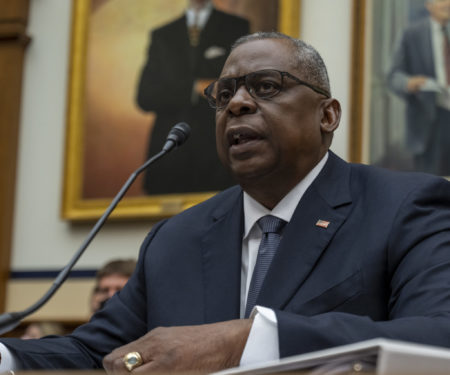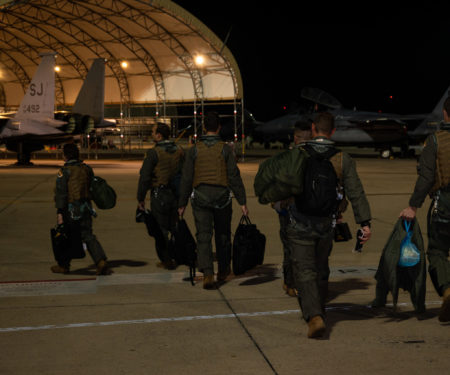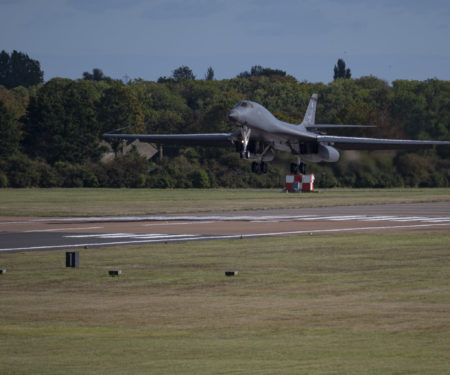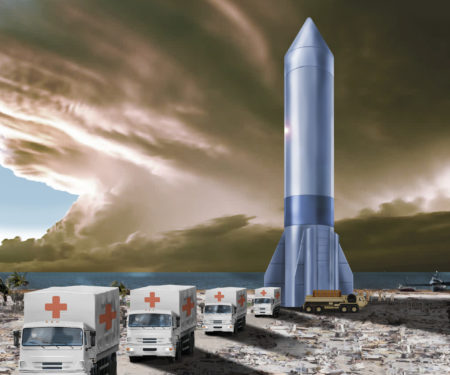Radar Sweep
Troubled Student Loan Forgiveness Program for Military, Public Servants Gets an Overhaul
The Biden administration is temporarily relaxing the rules for a student loan forgiveness program that has been criticized for its notoriously complex requirements—a change that could offer debt relief to thousands of teachers, social workers, military members, and other public servants.
'We’re in a Sprint Here’: The Space Force Struggles to Blaze its Own Path
The Space Force has settled on its headquarters structure and recently established the final of its three field commands. It’s officially taken over space operations from the Air Force, including missile warning, space launch, and space intelligence. And it is now operating the military’s nearly 80 satellites. But the service is finding it far more difficult to build its own combination of traditions, heritage, and esprit de corps.
Inside the B-52s’ Deployment to Support the Afghanistan Withdrawal
The B-52 bombers finished America’s longest war in much the same way as they began: carrying airmen called to military service in the aftermath of 9/11, hunting Taliban fighters through the mountains of Afghanistan, and watching as the seat of government in Kabul changed hands. After 20 years of counterterrorism operations in Southwest Asia, the Stratofortresses’ five-month tour to assist the U.S. withdrawal from Afghanistan was a last-ditch effort for America’s oldest bomber to secure some stability in the final days of the war.
After Afghanistan, What Kind of Wars Does the Pentagon Want to Fight?
As the last of the U.S. forces withdrew from Afghanistan and closed the books on the longest war in American history, the general consensus seemed to be that politicians won’t be asking the Pentagon to do that again anytime soon. The “that” includes sending hundreds of thousands of troops, as was the case at the height of the invasions of Iraq and Afghanistan, to win hearts and minds in a counterinsurgency campaign. For 20 years, the U.S. military was enlisted in the laudable if unrealized goal of creating a representative democracy—or at least a tolerably functioning inclusive state. Yet the Pentagon’s boots-on-the-ground experience in Afghanistan will nonetheless leave a lasting imprint on military doctrine in ways that will continue to shape its leaders.
SPONSORED: King Aerospace: Doing Things Right
Gen. Norman Schwarzkopf famously said, “The more you sweat in peace, the less you bleed in war.” King Aerospace President Jarid King says that concept—doing everything possible to do things right the first time to prevent issues later—drives everything they do for the government and military. And, he says, it has since 1992 when his father, Chairman Jerry King, founded the company upon being awarded his first government contract.
America’s First Exascale Supercomputer Is ‘On Track’ for 2021 Deployment
Exascale systems are at the core of the next generation of high-performance supercomputing. They will be capable of operating at one quintillion calculations per second, which is immensely faster than most modern systems. Using them, researchers could process massive amounts of data and conduct potentially groundbreaking simulations spanning many fields at much more rapid rates.
Report: US Army Could Field Two New Vertical Lift Aircraft if Service Lives Within Its Means
The U.S. Army can simultaneously field two clean sheet-designed future vertical lift aircraft, assuming costs remain affordable, according to an Oct. 6 report by the Center for Strategic and Budgetary Assessments. “In many ways, affordability begins with simply living within one’s means rather than optimistically estimating future cost savings that never materialize,” read the report, which was obtained by Defense News in advance of its release.
NGA Looking to Tap ‘All Sources of Innovation in the Commercial Space’
The exploitation and analysis of satellite imagery and geospatial data to understand activities on Earth historically has given the United States a huge intelligence advantage. That lead is now shrinking, requiring the United States to step up its game, a National Geospatial-Intelligence Agency official said Oct. 5. “Over the past few years, the world has begun to experience seismic changes in its threat and technological environment, putting our decision advantage at risk,” Cindy Daniell, NGA’s director of research, said in a speech at the 2021 GEOINT Symposium.
What It’s Like to Call in 688,000 Pounds of Firepower in One Battle
The name Joe O’Keefe might not ring a bell for you, but he may be one of the deadliest men to have ever lived. Over the course of five days in 2001, the Air Force combat controller called in hundreds of airstrikes and 688,000 pounds (344 tons) of bombs on a valley in Afghanistan filled with al-Qaeda fighters. The tonnage, more than twice that of the Statue of Liberty, still stands as the most dropped by “a single CCT, or anyone else, during an engagement in the history of airborne warfare,” wrote retired Air Force special operations officer Dan Schilling in his book “Alone at Dawn: Medal of Honor Recipient John Chapman and the Untold Story of the World’s Deadliest Special Operations Force.”




